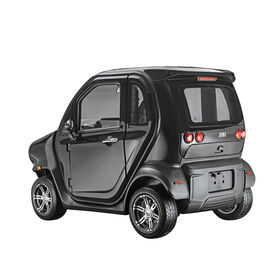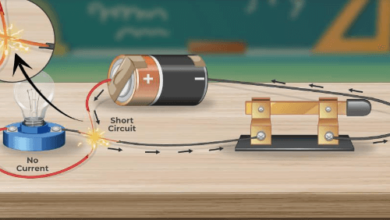Tiny Cars for Adults: A Comprehensive Exploration

In an age where urbanization is rampant, traffic congestion is a daily ordeal, and environmental concerns are ever-growing, the concept of “tiny cars for adults” has emerged as a fascinating and practical solution. These compact vehicles, designed for adult use, offer a range of benefits that align with contemporary needs for efficiency, sustainability, and convenience. This article delves into the world of tiny cars, exploring their history, advantages, types, and future prospects.
A Brief History of Tiny Cars
The concept of small cars isn’t new. The roots can be traced back to the early 20th century with vehicles like the Peel P50, often considered the world’s smallest car. Manufactured in the 1960s, the Peel P50 was a three-wheeled microcar designed for single-person use, measuring only 54 inches in length and 41 inches in width. Its quirky design and functionality have made it a cult classic among automobile enthusiasts.
Fast forward to the post-World War II era, Europe saw the rise of microcars as an economical solution to transportation. The iconic BMW Isetta, with its bubble-like design and tiny footprint, became a symbol of efficient mobility. These vehicles were born out of necessity in a time of economic recovery and fuel scarcity, embodying the principles of minimalism and practicality.
Advantages of Tiny Cars
Urban Mobility
One of the primary advantages of tiny cars is their unparalleled suitability for urban environments. With cities becoming increasingly crowded, parking space is at a premium, and navigating through traffic can be a nightmare. Tiny cars, with their compact dimensions, can easily maneuver through congested streets and fit into small parking spots that larger vehicles cannot. This makes them an ideal choice for city dwellers who face daily commuting challenges.
Fuel Efficiency
Tiny cars are often more fuel-efficient than their larger counterparts. Their smaller engines consume less fuel, which translates to cost savings for the owner and a reduced carbon footprint. In a world grappling with climate change and rising fuel prices, this aspect of tiny cars cannot be overstated. Electric variants of tiny cars further amplify this advantage, offering zero-emission transportation solutions.
Affordability
Generally, tiny cars are more affordable to purchase and maintain. Their smaller size means they require fewer materials to manufacture, which often results in lower retail prices. Maintenance costs are also typically lower due to simpler mechanical components and reduced wear and tear. This makes tiny cars an attractive option for budget-conscious consumers.
Environmental Impact
The environmental benefits of tiny cars extend beyond fuel efficiency. Their production has a smaller ecological footprint compared to larger vehicles, as they use fewer raw materials and generate less waste. Additionally, many tiny cars are designed with sustainability in mind, incorporating recyclable materials and energy-efficient manufacturing processes.
Types of Tiny Cars
Microcars
Microcars, such as the Smart Fortwo and the Fiat 500, are among the most well-known types of tiny cars. These vehicles typically have a seating capacity for two passengers and offer a surprising amount of interior space despite their compact exteriors. Microcars are designed primarily for urban driving and short commutes, providing an ideal balance of convenience and comfort.
Electric Tiny Cars
Electric tiny cars are gaining popularity as the world shifts towards greener transportation solutions. Models like the Renault Twizy and the BMW i3 exemplify this trend. These vehicles offer all the advantages of tiny cars with the added benefit of being powered by electricity, making them an eco-friendly choice. Their electric motors provide instant torque, resulting in zippy performance ideal for city driving.
Quadricycles
Quadricycles, like the Citroën Ami and the Aixam eCoupé, are another category of tiny cars. These vehicles are classified differently depending on regional regulations but generally fall between motorcycles and standard cars in terms of size and power. Quadricycles are often used for short-distance travel and are particularly popular in European cities where they can be driven with a lighter driving license.
Kei Cars
Originating in Japan, Kei cars (or kei jidōsha) are a unique category of tiny cars designed to comply with specific regulations concerning size, engine displacement, and power output. Kei cars, such as the Suzuki Alto and the Honda N-One, are immensely popular in Japan due to their tax benefits, fuel efficiency, and ability to navigate narrow urban streets. These cars are a testament to the potential of tiny vehicles in densely populated areas.
Future Prospects of Tiny Cars
The future of tiny cars looks promising, driven by technological advancements, changing consumer preferences, and evolving urban landscapes. Several trends are shaping the trajectory of tiny cars, making them a key component of future transportation.
Autonomous Driving
The advent of autonomous driving technology is set to revolutionize the automotive industry, and tiny cars are no exception. Self-driving tiny cars could provide personalized, on-demand transportation solutions, reducing the need for private car ownership and alleviating traffic congestion. Companies like Google and Tesla are already experimenting with autonomous vehicles, and it’s only a matter of time before tiny cars join this revolution.
Shared Mobility
Shared mobility services, such as car-sharing and ride-hailing, are gaining traction worldwide. Tiny cars are perfectly suited for these services due to their low operating costs and ease of use. Car-sharing platforms like Car2Go (now Share Now) have already incorporated tiny cars into their fleets, offering users a convenient and economical transportation option.
Sustainability Focus
As environmental awareness grows, the demand for sustainable transportation solutions is increasing. Tiny cars, particularly electric ones, align with this demand by offering a greener alternative to traditional vehicles. Innovations in battery technology and renewable energy integration will further enhance the appeal of tiny cars, making them an integral part of sustainable urban mobility strategies.
Customization and Personalization
Advancements in manufacturing technologies, such as 3D printing, are paving the way for greater customization and personalization of tiny cars. Consumers will be able to design their vehicles according to their preferences, choosing from a range of features, colors, and configurations. This level of personalization will make tiny cars more appealing to a broader audience, catering to individual tastes and lifestyles.
Challenges and Considerations
Despite their numerous advantages, tiny cars for adults also face several challenges that need to be addressed to ensure their widespread adoption.
Safety Concerns
One of the primary concerns with tiny cars is safety. Due to their smaller size and lighter weight, tiny cars may offer less protection in the event of a collision compared to larger vehicles. Manufacturers are continuously working on enhancing safety features, such as advanced driver assistance systems (ADAS) and reinforced structures, to mitigate these concerns. Regulatory standards and crash testing protocols also play a crucial role in ensuring the safety of tiny cars.
Public Perception
Public perception is another hurdle that tiny cars must overcome. In some cultures, larger vehicles are often associated with status and luxury, while tiny cars may be perceived as less prestigious. Changing these perceptions requires effective marketing strategies and public awareness campaigns that highlight the benefits and practicality of tiny cars.
Infrastructure Compatibility
The integration of tiny cars into existing infrastructure is another consideration. Urban planning and infrastructure development need to accommodate the unique characteristics of tiny cars, such as their smaller size and electric charging requirements. This includes the availability of dedicated parking spaces, charging stations, and supportive policies that encourage the use of tiny cars.
Conclusion
Tiny cars for adults represent a forward-thinking approach to modern transportation challenges. Their compact size, fuel efficiency, affordability, and environmental benefits make them an attractive option for urban mobility. As technology continues to evolve, tiny cars are poised to play a significant role in shaping the future of transportation, offering innovative solutions for sustainable and efficient travel.
The journey of tiny cars, from their early iterations to their current sophisticated models, showcases the potential of small-scale innovation in addressing big problems. With continued advancements and a focus on overcoming challenges, tiny cars are set to become a staple of urban transportation, offering a practical and eco-friendly alternative to traditional vehicles.






